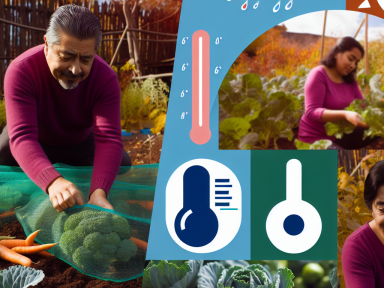Understanding the Basics of Winter Gardening
To cultivate a thriving winter vegetable garden, it’s essential to comprehend the unique challenges and advantages that cooler temperatures offer. Winter gardens require fewer pest controls and the risk of plant diseases decreases. The key is selecting the right vegetables and providing the appropriate care.
1. Selecting the Right Vegetables
Choosing vegetables that flourish in cooler temperatures is the foundation of a successful winter garden. Here are some top choices:
- Spinach: Thrives in frosty conditions and continues to grow under a light blanket of snow.
- Brussels Sprouts: Improve in flavor after a few frosts. Plant them early enough for them to mature in the cold.
- Kale: Another hardy green that gets sweeter with frost exposure.
- Carrots: Cool weather enhances their sweetness. A layer of mulch will protect them during freezing temperatures.
- Parsnips: Can survive even the harshest of winters, developing a richer flavor after frost.
2. Preparing the Soil
Healthy soil is paramount for winter gardening success:
- Enrich with Compost: Adding compost in late summer or early fall enriches the soil with nutrients required for vegetable growth.
- Improve Drainage: Well-draining soil prevents root rot. Consider building raised beds for better drainage.
- Mulching: Covering the soil with organic mulch regulates soil temperature and conserves moisture.
3. Providing Protection
Winter vegetables need protection from extreme cold and wind:
- Cold Frames: These mini-greenhouses trap heat and protect plants from frost. They can be constructed from old windows and scrap wood.
- Row Covers: Floating row covers provide a barrier against frost while allowing sunlight to reach the plants. Secure them with rocks or soil.
- Cloche: An individual plant protector made from translucent materials can be placed over single plants or clusters.
4. Timing Your Planting
Proper timing is crucial for winter gardening:
- Start Early: Some vegetables need to be started in late summer to ensure they mature in cool weather.
- Succession Planting: Planting at intervals will provide a continuous harvest throughout the winter months.
- Observe the Weather: Keep an eye on local frost dates and plan accordingly. Plant hardy vegetables slightly before the first frost date.
5. Watering Wisely
Watering habits change with colder temperatures:
- Water Early in the Day: This allows the water to soak in before temperatures drop at night.
- Check Soil Moisture: Use a moisture meter to avoid overwatering. Cold weather reduces evaporation, so less frequent watering is needed.
6. Harvesting Tips
Knowing when and how to harvest can extend the life of your winter garden:
- Pick Regularly: Regular harvesting encourages continuous production, especially for leafy greens.
- Store Correctly: Many winter vegetables can be left in the ground and harvested as needed, but ensure they are stored in a cool, dry place if harvested at once.
Continuing to Learn
Winter gardening offers unique rewards and challenges. With proper planning, the right vegetable choices, and attention to detail, you can keep your garden thriving through the colder months.



GIPHY App Key not set. Please check settings